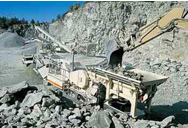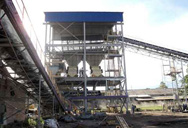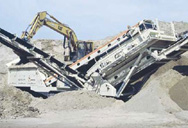introduction for wind turbines

Wind Energy - National Geographic Society
2023.10.19 Article Vocabulary Anything that moves has kinetic energy, and scientists and engineers are using the wind’s kinetic energy
More
Introduction to Wind Turbines > Experiment 1
Today, wind is becoming more common as a renewable energy source through the use of wind turbines. Wind turbines have three basic parts–a tower, blades, and a generator. These parts work together to convert
More
How Do Wind Turbines Work? Department of
2 天之前 Wind turbines work on a simple principle: instead of using electricity to make wind—like a fan—wind turbines use wind to make electricity. Wind turns the propeller-like blades of a turbine around a
More
How a Wind Turbine Works - Text Version
1 天前 How a Wind Turbine Works. A wind turbine turns wind energy into electricity using the aerodynamic force from the rotor blades, which work like an airplane wing or helicopter rotor blade. When wind flows across the
More
Introduction to Wind Turbine Aerodynamics SpringerLink
Wind-Turbine Aerodynamics is a self-contained textbook which shows how to come from the basics of fluid mechanics to modern wind turbine blade design. It presents a
More
An Introduction to windmill and Wind Turbine Design and
An Introduction to windmill and Wind Turbine Design and Manufacturing Processes. Course Description: The entire world is seeking more energy, including energy generated by
More
Introduction to Wind Turbine Technology SpringerLink
2011.1.1 Since the primary purpose of a wind turbine is to convert the kinetic energy (KE) of the wind into (usually) electrical energy, it is useful to begin by considering the
More
How a Wind Turbine Works Department of Energy
2014.6.20 From massive wind farms generating power to small turbines powering a single home, wind turbines around the globe generate clean electricity for a variety of power needs.. In the United States, wind
More
Introduction to wind turbine blade design - ScienceDirect
2023.1.1 Using normal scaling laws, the weight of wind turbine blades should increase with length to the power of three. However, historically, according to Fig. 1.1, blade weight has only increased to the power of 2.5, as blade manufacturers have successfully improved the aerodynamic performance and control of the wind turbines, as well as the
More
How Do Wind Turbines Work? Department of
11 小时之前 A wind turbine turns wind energy into electricity using the aerodynamic force from the rotor blades, which work like an airplane wing or helicopter rotor blade. When wind flows across the blade, the air
More
Introduction to Modern Wind Turbines - ASME Digital
Wind turbine nomenclature has also evolved during the past several decades, and definitions of common terms will be presented here. In addition, parameters which wind turbine engineers use to analyze power and energy output will be introduced, in preparation for the more-detailed discussions of the wind characteristics and wind turbine ...
More
Introduction To Wind Turbine Wind Turbine Design
2022.7.23 The other main type of turbine is the vertical axis wind turbine (VAWT), this has a vertical axis position and does not have to be faced into the direction of the wind, and therefore it is equally effective irrespective of wind direction.This type of turbine works most effectively in urban areas usually typified by turbulent winds, therefore although the
More
An Introduction to Wind Power - Just Energy
2023.3.30 What is Wind Power? Wind power is the process of harnessing energy from the movement of the wind and converting it to useful forms of mechanical power and electricity. Today, most wind energy comes from turbines – essentially giant windmills. The wind turns two or three of the turbine’s propeller-like blades around the turbine’s rotor.
More
(PDF) Introduction to wind turbine technology
2021.12.2 Introduction to wind turbine technology • 509 Figure 9.7 A 2-MW horizontal axis wind turbine (The size of this wind turbine can be judg ed from the people standing at its bottom.)
More
Introduction to Wind Turbine Aerodynamics SpringerLink
This book offers an introduction to the topic for professionals and students with a diverse range of backgrounds. Wind Turbine Aerodynamics is a self-contained textbook that shows how to progress from the basics of fluid mechanics to modern wind turbine blade design. It presents the fundamentals of fluid dynamics and inflow conditions, as well as extensive
More
Doubly fed induction generator systems for wind turbines
2002.8.7 This article shows that adjustable speed generators for wind turbines are necessary when output power becomes higher than 1 MW. The doubly fed induction generator (DFIG) system presented in this article offers many advantages to reduce cost and has the potential to be built economically at power levels above 1.5 MW, e.g., for off
More
Introduction to wind turbine blades - Windpower
2012.1.9 A Leitwind turbine blade. Rotor blades, like aircraft wings, are essentially cantilevered beams with lift-generating surfaces. Early blades were made of wood. More recently, they are manufactured of fiberglass and epoxy resins by reaction injection molding in rather complex equipment. The quest for greater power will demand longer blades
More
Introduction to the Modelling of Wind Turbines - Wind
2012.4.20 The main purpose of this section is to convey an intuitive understanding of the aerodynamic system of a wind turbine, and how this aerodynamic system can be modelled in various ways. A block diagram of a generic wind turbine model is presented, and the various independent elements of a wind turbine are explained.
More
Wind Energy MIT Climate Portal
2023.5.22 Wind energy is a form of renewable energy, typically powered by the movement of wind across enormous fan-shaped structures called wind turbines.Once built, these turbines create no climate-warming greenhouse gas emissions, making this a “carbon-free” energy source that can provide electricity without making climate change
More
Model Predictive Control of Wind Turbines - Welcome to
This chapter begins with an introduction to wind turbines and wind turbine control. Then follows a list of contributions, which this thesis brings to the eld of wind turbine control. The chapter is ended with an outline of the thesis. 1.1 Introduction to wind turbines Wind turbines exist in many di erent con gurations and sizes: upwind or down-
More
Introduction to Wind Power - MIT - Massachusetts
2016.2.14 Market Share of U.S. Wind Power Capacity, by Owner. 46,100 wind turbines, 61,110 MW capacity. Average wind turbine installed during 2013: − rating of 1.87‐MW − hub height 80 meters − rotor diameter 97 meters. Source: AWEA U.S. Wind Industry Annual Market Report.
More
An Introduction to Meteorology for Airborne Wind Energy
2013.1.1 Abstract. Airborne wind energy systems (AWES) are devices that effectively extract energy from the air flow, more specifically kinetic energy, and convert it to electricity. Wind is the manifestation of the kinetic energy present in the atmosphere. Understanding wind, its properties and power, as well as other atmospheric properties that can ...
More
Introduction To Wind Turbines - TheGreenAge
What are wind turbines? Windmills (now in the form of wind turbines) have been used for millennia to convert the wind’s kinetic energy into mechanical energy. As early as 200 B.C., mechanical energy was used for specific tasks including grinding grain and pumping water. Nowadays, wind turbines harness kinetic energy from the air and convert ...
More
Introduction Wind farms in complex terrains: an introduction ...
2017.3.6 The topics include wind statistics on both the micro- and macro-scale level , the effect of surface roughness on the description of boundary-layer flow physics [3,4], the effect of complex terrain on sound propagation , as well as various strategies for modelling the flow field around wind turbines [6–8] and wind farms [9–11].
More
Parametric study of hybrid monopile foundation for offshore wind ...
2020.12.15 The typical types of offshore wind turbine foundations are schematically plotted in Fig. 1 (Wang et al., 2018b). Currently, the most widely used support structure for OWT is the monopile foundation. In Europe, there are 4258 monopile supported OWTs, accounting for 81% of the total market share by 2019 (WindEurope, 2020).
More
Introduction to Doubly-Fed Induction Generator for
2018.9.25 Introduction to Doubly-Fed Induction Generator for Wind Power Applications Dr John Fletcher and Jin Yang University of Strathclyde, Glasgow United Kingdom 1. Introduction This chapter introduces the operation and control of a Doubly-fed Induction Generator (DFIG) system. The DFIG is currently the system of choice for multi
More
Wind Power Technology: An Introduction
Alois Schaffarczyk received his Ph.D. in Statistical Physics in 1986 from the University of Göttingen, Germany. After some years in the industry, he became Professor at Kiel University of Applied Sciences in 1992. Since
More
Introduction to Wind Turbines and their Reliability
2010.5.19 Introduction to Wind Turbines and their Reliability Availability ... Failure/turbine/year and Downtime from 2 Large Surveys of European Wind Turbines over 13 years. Reliability Weather, WS DK 24 of 35 Wind Speed Failure Rate. Reliability Time, LWK 0 20 40 60 80 100 0 2 4 6 8 0
More
(PDF) Wind Energy: A Review Paper - ResearchGate
2018.7.2 Wind Energy- Introduction: Rising oil costs feature the abuse of sustainable power source applications. Wind vitality is a standout amongst ... The wind turbine blade’s fatigue life is ...
More
Introduction to the Modelling of Wind Turbines - Semantic
2005.10.28 2021. TLDR. A novel control algorithm is presented for variable speed wind generators (VSWG), designed to provide support to grid frequency regulation and ensures that VSWG ‘’truly’’ emulates response of a conventional generating unit with non-reheat steam turbine in the first several seconds after active power unbalance. PDF.
More
Introduction to Electrical Electronic Components of Wind Turbines
2012.1.13 In just a few tasks, electric motors pitch the blades on turbines to capture the most power from the available wind. Motors on yaw drives keep the nacelle pointed in a proper direction. Motor outputs on these units range from 2.2 to 22 kW. They attach to two or three planetary speed reducers to produce output torques from 2,000 to 50,000 nm.
More
Triple-speed coaxial magnetic gear for wind turbine
Moghimi, A., Hosseini Aliabadi, M. and Feshki Farahani, H. (2022), "Triple-speed coaxial magnetic gear for wind turbine applications: introduction and comprehensive analysis", COMPEL - The international journal for computation and mathematics in electrical and electronic engineering, Vol. 41 No. 4, pp. 1223-1244.
More
Introduction to the Doubly-Fed Induction Generator for Wind
2010.12.30 This chapter introduces the operation and control of a Doubly-fed Induction Generator (DFIG) system. The DFIG is currently the system of choice for multi-MW wind turbines. The aerodynamic system must be capable of operating over a wide wind speed range in order to achieve optimum aerodynamic efficiency by tracking the
More
An overview of the history of wind turbine development:
2022.8.15 This work is adapted from two chapters in “Wind Energy for the Rest of Us” by the first author and summarizes the key characteristics of wind turbine development in tabular form, showing that the technology has converged to a common configuration: Horizontal-axis wind turbines with a three-blade rotor upwind of the tower.We introduce
More
Wind Turbine Generator Technologies IntechOpen
2012.3.28 Introduction. Wind energy is playing a critical role in the establishment of an environmentally sustainable low carbon economy. This chapter presents an overview of wind turbine generator technologies and compares their advantages and drawbacks used for wind energy utilization. Traditionally, DC machines, synchronous machines and squirrel
More
Materials for Wind Turbine Blades: An Overview - PMC
2017.11.9 The Gedser turbine (three blades, 24 m rotor, 200 kW, Figure 1 b) was the first success story of wind energy, running for 11 years without maintenance. In this way, the linkage between the success of wind energy generation technology and the application of composite materials became an issue from the beginning: the first turbine, built with steel
More- محاسبه ظرفیت mon برای آسیاب توپ
- المحجر سحق المصنعين غراهام
- مطحنة الرمال المصنعة كوبوس مطحنة
- ثنائية المغذية تهتز الاتجاه
- وانادیوم کارخانه فرآوری
- محلية الصنع السد مربع ألاسكا
- كسارات الباحة
- طلب كسارة الفحم
- السيد دادلي مطحنة البن الدولية
- طاحونة الرطب التلقائي بالكامل المشروع
- ثمن آلة شبكة التلك
- الشركة المصنعة كسارة مخروط في ألمانيا
- هر يي الرمال غسالة
- موبيل آلة تحطم الحجر
- costo trituradora de mandibulas de laboaratorio